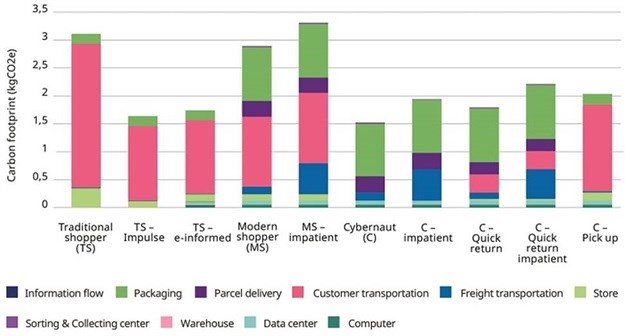Could online shopping help us reduce our carbon footprint?

This is according to Simon Webber, lead portfolio manager for Schroders’ Global and International Equities, who says that based on the direct greenhouse gas (GHG) emissions produced by the retailer, the evidence is clear and in favour of e-commerce. “Online stores require data centres (which are increasingly powered by dedicated renewable energy installations) and a relatively small number of large distribution centres. By comparison, the environmental footprint created by an extensive retail store network – that is temperature controlled and well lit – is much larger.”
Most emissions are generated when driving to the shops
Webber says that the indirect GHG emissions associated with the distribution of goods are, in the case of traditional retailers, usually consumer-driven. “Quite literally in fact: most are generated when we, the consumer, drive our cars to the shops to buy something. However, for online retail, these emissions may be reported by a logistics company such as FedEx, or the e-commerce retailer themselves if they have invested in their own delivery infrastructure. So, we need to be careful that we are actually measuring comparably between types of retailer.” In addition, he says that the number of different ways we journey to the store, the e-commerce delivery method and the delivery network density, all factor into the ultimate GHG emissions associated with a consumer purchase.
There are, however, a number of academic studies that are beginning to get more precise in the estimation of the current GHG emissions. Webber points to a study by Dimitri Weideli at MIT Centre for Transportation and Logistics, which assessed the carbon footprint of the buying process of a toy in an urban area. The research studied the buying process separated into ‘traditional shoppers’ and ‘cybernaughts’, looking at various different types of the shopping process. In the chart below, which summarises the findings, the extent of the impact of customer transportation emissions for the traditional shopper is clear, as is the packing and parcel delivery related emissions associated with e-commerce.











